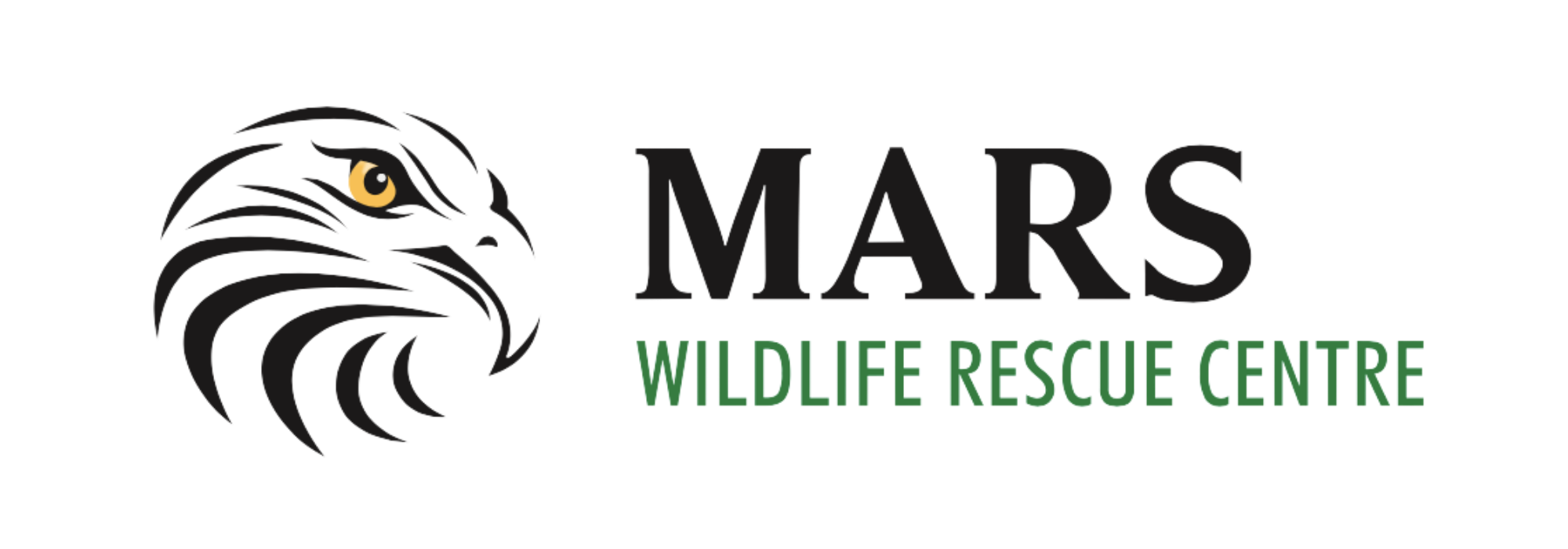(Photo By Sandy Royer)
MARS Moment -2014 Saw Whet Owl
by Sandy Fairfield, MARS Education Coordinator
This year we have enjoyed an early spring and wonderful summer weather as a result M.A.R.S. was very busy taking care of many injured, orphaned or abandoned wildlife. With the approach of fall this year’s young will still be honing their life skills, which takes a huge toll during their first year as many succumb to starvation or predation. Of the huge variety of species that are admitted to M.A.R.S., one of my favorites are the owls, especially the small owls.
There are more than 200 species of owls worldwide and British Columbia is home to fifteen of them. Owls vary greatly in size, colour and habitat; the largest found in B.C. is the great grey owl which is not found on Vancouver Island, the smallest is the diminutive northern pygmy owl. The next smallest is the Northern saw whet owl that appears “cute and cuddly” but is one of the most ferocious hunters for its size tackling prey of similar size. Standing only 20 centimeters tall and weighing between 75 and 100 grams, they have an impressive wingspan of up to 50 centimeters. In comparison to its body the saw whet’s head seems enormous with huge round yellow eyes set amongst exquisitely marked facial disc feathers that form a distinct white “V” shape between the eyes.
Saw whet owls are found across North America and while some Central and eastern species are migratory, local species move from a lower elevation in the winter to higher elevations in the summer. Preferring coniferous forests with plenty of sapling trees and open clearings for roosting and wintering; during their breeding season they prefer mature forest areas which provide them with nesting needs especially tree cavities. Nocturnal hunters by nature they are equipped with special serrated wing feathers that provide them with silent flight. Prey is located with pin-point accuracy thanks to their facial disc feathers which are drawn forward to resemble satellite dishes channelling the minutest sound into the large ear openings. Small rodents including deer mice, voles and shrews are their favorite prey of choice, but they will also dine on small birds, bats and small squirrels. In winter they will often catch several mice which they will store for later, thawing out food as needed. Most people think that owls just “hoot” in fact there are many calls ranging from hoots, toots, barks, screams even rasps and hisses! Saw whet owls have a series of “toots” which echo around the forest.
M.A.R.S. admits several owl species on a regular basis, most common are the barred and great horned owls; less frequent visitors are the small owls, the northern saw whet, northern pygmy, western screech, and the short eared owls. Our latest patient admitted 3 weeks ago was a saw whet owl that was found in a garden standing on its wing unable to move. It was obvious that it had severe injuries and was taken straight to Shamrock Vet in Comox. It was determined that the right wing had irreparable damage that would require amputating part of the wing. The owl made it through a lengthy surgery monitored by M.A.R.S. summer students and staff, a huge thank you to Dr.Joan and Dr.Pavel. If the little owl continues to improve we are hoping it may become an ambassador for the society, permits permitting, as it is not releasable being unable to fly or hunt for food.
To report injured wildlife call 250-337-2021. For updates on the owl’s progress please visit our Web www.wingtips.org.
